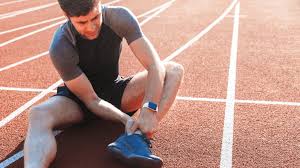Muscle Tendinopathy
What is a muscle tendinopathy?
Muscle tendinopathies can occur throughout the whole body. They are where a tendon(the connective tissue at the end of a muscle that attaches the muscle to the bone) becomes inflamed and painful. This can happen more acutely from a strain or single movement or series of events or more chronically from repeat strains and overuse.


How do I know if I have a muscle tendinopathy?
This can be hard to tell on your own, normally they are diagnosed through clinical testing and often ordering imaging to assess the health of the tendon. We can of course help with this, some of the symptoms that might suggest you you have a tendinopathy are:
- Difficulty moving your joint.
- Feeling a crackling or grating sensation when you move your joint.
- Muscle weakness and loss of strength.
- Red, warm skin in the painful area.
What causes tendinopathies?
Most commonly tendinopathies occur when a tendon cant keep up with its workload. This can happen when a tendon is overused or when it is disadvantaged. Overuse most commonly occurs through workload and length and intensity of exercise.
Tendon’s particularly those of the legs can also become inflamed and damaged through mechanical disadvantage. Consider an example of tibialis posterior whose job it is to hold the arch of the foot up. If a foot is extremely pronated or rolls in this tendon will have to work much harder to do the same job as the equivalent tendon in a more neutrally positioned foot. This extra workload places strain on the tendon and in time with use can create inflammation and lead to a tendinopathy.


How can tendinopathies be fixed?
There are a lot of treatment options for tendinopathies most focus on:
- stimulating blood flow,
- encouraging collagen repair, (this is the tissue tendons are made of)
- Reducing inflammation
- allowing the tendon to rest by removing as many damaging causes as possible
- Offloading the tendon using braces, strapping or orthotics
- Creating strength and mobility in the tendon and muscle to help them adapt to its workload
Our podiatrists can offer a variety of treatments that can help facilitate these processes among the more common we use are
- Topical inflammatories
- K Laser therapy
- Shockwave therapy
- Orthotics
- Custom rehabilitation and strengthening programs
- Hot and cold therapy
- Changes in footwear
- Ultrasound
- Dry needling


How long will it take for a muscle tendinopathy to get better?
This varies depending on its severity and location some tendons have better blood flow than other which can contribute to the pace that they heal at. In most cases though tendon injuries take between 4-12 weeks although some more chronic tendinopathies can be up to 6 months or require surgery. Our team can guide you on the likely length of recovery based on your individual circumstances.
